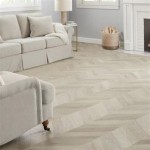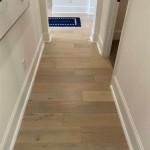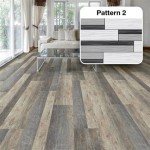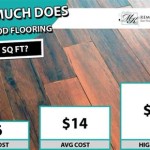Glue for Wooden Flooring On Concrete: A Comprehensive Guide
Installing wooden flooring directly onto concrete is a popular choice due to its durability, ease of maintenance, and aesthetic appeal. While floating floors are a viable option, some homeowners prefer the sturdiness and sound reduction provided by gluing the flooring to the subfloor. Choosing the right glue is paramount for a successful and long-lasting installation. This article delves into the intricacies of glue for wooden flooring on concrete, providing insights into different types, application techniques, and considerations for achieving a seamless and durable finish.
Understanding the Importance of Adhesive
Glue plays a crucial role in securing wooden flooring to concrete, ensuring its longevity and stability. It acts as a bond, effectively transferring loads from the flooring to the subfloor. Unlike nails or staples, which create localized points of contact, glue creates a continuous bond, minimizing movement and reducing the risk of squeaking or cracking. The adhesive also dampens sound transmission, enhancing the overall comfort and quietness of the space.
The type of glue selected greatly influences the success of the installation. Different adhesives are formulated for specific types of wooden flooring and concrete substrates. Factors like moisture content, temperature variations, and the presence of existing finishes on the concrete surface necessitate careful consideration when choosing the appropriate adhesive.
Types of Glue for Wooden Flooring on Concrete
The adhesive market offers a diverse range of options designed for wooden flooring installation on concrete. These adhesives typically fall into four primary categories:
1. Moisture-Curing Urethane Adhesives
Moisture-curing urethane adhesives are renowned for their exceptional strength, durability, and resistance to moisture and temperature fluctuations. They form a strong, flexible bond that accommodates slight movements in the subfloor, making them suitable for various wooden flooring types, including engineered wood, solid hardwood, and laminate.
These adhesives cure through a chemical reaction with moisture in the air or from the concrete surface, providing robust adhesion. They are available in single-component and two-component formulations, offering varying levels of open time and curing speeds.
2. Polyurethane Adhesives
Polyurethane adhesives are another robust option for wooden flooring on concrete. They exhibit excellent adhesion to a wide range of substrates, including concrete, wood, and tiles. These adhesives are known for their moisture-resistant properties, making them suitable for areas prone to moisture, such as bathrooms and kitchens.
Polyurethane adhesives are typically available in two-component formulations, requiring mixing before application. They offer rapid drying times and excellent bonding strength, providing a reliable bond for wooden flooring.
3. Contact Adhesives
Contact adhesives are solvent-based adhesives that work by dissolving the surface of the materials they are applied to, creating a strong bond. They are known for their high initial grab and fast drying time, making them suitable for quick installations.
Contact adhesives are often used for attaching thin wooden flooring, such as parquet or veneer, to concrete subfloors. They require careful application and can be challenging to use on porous surfaces, as the solvents can penetrate and compromise the bond.
4. Epoxy Adhesives
Epoxy adhesives are two-component adhesives that form a strong, durable bond. They are known for their exceptional adhesion to a wide range of substrates, including concrete, wood, and metal. Epoxy adhesives are ideal for high-traffic areas and are resistant to water, chemicals, and abrasion.
While epoxy adhesives offer excellent adhesion and durability, they can be more challenging to work with than other options. They require careful mixing and have a limited open time, making it essential to work quickly and efficiently during application.
Factors to Consider When Choosing Glue
The choice of adhesive should be based on a comprehensive assessment of several factors:
1. Subfloor Conditions
The condition of the concrete subfloor plays a critical role in determining the suitable adhesive. Factors to consider include:
- Moisture Content: Concrete should have a moisture content below the specified maximum for the selected adhesive. Excessive moisture can lead to delamination and premature failure of the flooring.
- Surface Smoothness: Smooth, even surfaces provide optimal adhesion. Any unevenness or imperfections should be addressed before applying the adhesive.
- Existing Finishes: The presence of paint, sealant, or other coatings can affect adhesion. Compatibility of the selected adhesive with these finishes should be verified.
2. Type of Wooden Flooring
Different wooden flooring types have varying requirements for adhesion. Factors to consider include:
- Thickness: Thicker flooring typically requires a stronger adhesive to support the weight and ensure stability.
- Species: Some wood species are more susceptible to movement and moisture changes, necessitating adhesives that can accommodate these variations.
- Finish: Pre-finished flooring may have compatibility considerations with certain adhesives.
3. Environmental Conditions
The environment in which the installation is taking place can impact the selection of glue. Factors to consider include:
- Temperature: Adhesive performance can be affected by temperature variations. The chosen adhesive should be compatible with the expected temperature range.
- Humidity: High humidity levels can affect curing time and adhesive performance. Adhesives designed for specific humidity levels should be chosen.
4. Application Technique
The chosen adhesive should be compatible with the intended application technique. Factors to consider include:
- Spreading: The adhesive should be easy to spread evenly and consistently across the concrete surface.
- Open Time: The open time refers to the working time available for the adhesive before it begins to set. The chosen adhesive should have sufficient open time for the installation process.
- Curing Time: The curing time refers to the time it takes for the adhesive to fully cure. The selected adhesive should have a curing time that aligns with the flooring installation schedule.
Conclusion
Choosing the right glue for wooden flooring on concrete is essential for a successful and long-lasting installation. By understanding the different types of adhesives, considering the factors that influence the selection, and employing proper application techniques, homeowners can ensure a durable and aesthetically pleasing flooring solution.

Installing Hardwood Floors On Concrete Subfloors

Floor Adhesives Glue Everbuild

Glue Wood Flooring To A Concrete Slab Fine Homebuilding

What Is Flexible Flooring Adhesive Ambience Hardwood

Gluing Down Prefinished Solid Hardwood Flooring Directly Over Concrete Slab Youtube

The Right Wood Floor Adhesive For Job Trends Installation

How To Install Engineered Wood Flooring On Concrete

The Science Behind Wood Floor Adhesives
How To Remove A Wooden Floor That Has Been Glued The Concrete With Very Strong Glue Without Damaging Are There Any Tricks For Doing This Quora

Can You Glue Down Solid Wood Flooring Hardwood Guide Reallyfloors America S Est
See Also







